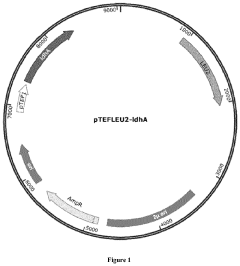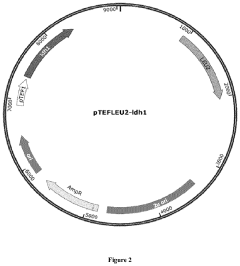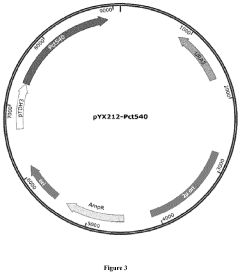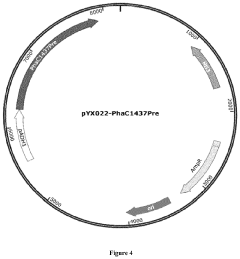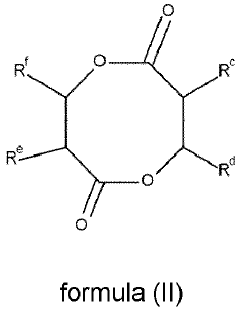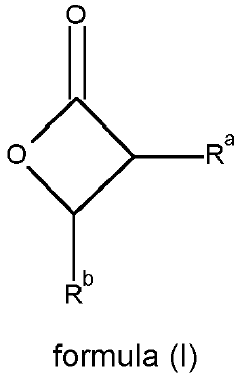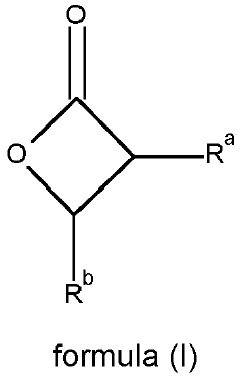How to Conduct PLA Market Research Effectively?
JUN 25, 20259 MIN READ
Generate Your Research Report Instantly with AI Agent
Patsnap Eureka helps you evaluate technical feasibility & market potential.
PLA Market Research Background and Objectives
Polylactic acid (PLA) market research has become increasingly crucial in recent years due to the growing demand for sustainable and biodegradable materials across various industries. The primary objective of conducting effective PLA market research is to gain comprehensive insights into market dynamics, consumer preferences, and emerging trends within the bioplastics sector.
The evolution of PLA technology has been marked by significant advancements in production processes, material properties, and applications. Initially developed as a biodegradable alternative to conventional plastics, PLA has since expanded its reach into diverse sectors, including packaging, textiles, and medical devices. Understanding this technological progression is essential for identifying future growth opportunities and potential challenges in the market.
Market research in the PLA sector aims to assess the current market size, growth potential, and key drivers influencing adoption rates. This includes analyzing factors such as environmental regulations, consumer awareness of sustainability issues, and the performance characteristics of PLA compared to traditional plastics. By examining these elements, researchers can provide valuable insights to stakeholders looking to enter or expand their presence in the PLA market.
Another critical aspect of PLA market research is evaluating the competitive landscape. This involves identifying major players in the industry, their market share, product portfolios, and strategic initiatives. Understanding the competitive dynamics helps in forecasting market trends and potential disruptions that may impact the industry's future trajectory.
Effective PLA market research also encompasses analyzing the entire value chain, from raw material suppliers to end-users. This holistic approach allows for a comprehensive understanding of cost structures, supply chain challenges, and potential bottlenecks that may affect market growth. Additionally, it helps in identifying opportunities for vertical integration or strategic partnerships within the industry.
Consumer perception and acceptance of PLA products play a crucial role in market development. Research objectives often include gauging consumer awareness, willingness to pay premiums for eco-friendly alternatives, and preferences for specific PLA applications. This information is vital for product development strategies and marketing initiatives aimed at increasing PLA adoption across different consumer segments.
Technological advancements and innovation in PLA production and applications are ongoing, making it essential for market research to stay abreast of the latest developments. This includes monitoring research and development activities, patent filings, and emerging technologies that could potentially disrupt the current market landscape or open new avenues for growth.
The evolution of PLA technology has been marked by significant advancements in production processes, material properties, and applications. Initially developed as a biodegradable alternative to conventional plastics, PLA has since expanded its reach into diverse sectors, including packaging, textiles, and medical devices. Understanding this technological progression is essential for identifying future growth opportunities and potential challenges in the market.
Market research in the PLA sector aims to assess the current market size, growth potential, and key drivers influencing adoption rates. This includes analyzing factors such as environmental regulations, consumer awareness of sustainability issues, and the performance characteristics of PLA compared to traditional plastics. By examining these elements, researchers can provide valuable insights to stakeholders looking to enter or expand their presence in the PLA market.
Another critical aspect of PLA market research is evaluating the competitive landscape. This involves identifying major players in the industry, their market share, product portfolios, and strategic initiatives. Understanding the competitive dynamics helps in forecasting market trends and potential disruptions that may impact the industry's future trajectory.
Effective PLA market research also encompasses analyzing the entire value chain, from raw material suppliers to end-users. This holistic approach allows for a comprehensive understanding of cost structures, supply chain challenges, and potential bottlenecks that may affect market growth. Additionally, it helps in identifying opportunities for vertical integration or strategic partnerships within the industry.
Consumer perception and acceptance of PLA products play a crucial role in market development. Research objectives often include gauging consumer awareness, willingness to pay premiums for eco-friendly alternatives, and preferences for specific PLA applications. This information is vital for product development strategies and marketing initiatives aimed at increasing PLA adoption across different consumer segments.
Technological advancements and innovation in PLA production and applications are ongoing, making it essential for market research to stay abreast of the latest developments. This includes monitoring research and development activities, patent filings, and emerging technologies that could potentially disrupt the current market landscape or open new avenues for growth.
PLA Market Demand Analysis
The PLA (Polylactic Acid) market has been experiencing significant growth in recent years, driven by increasing environmental concerns and the shift towards sustainable materials. Market research indicates a robust demand for PLA across various industries, particularly in packaging, textiles, and medical applications. The global PLA market size was valued at approximately $698 million in 2020 and is projected to reach $2.9 billion by 2028, growing at a CAGR of 19.5% during the forecast period.
The packaging industry represents the largest end-use segment for PLA, accounting for over 40% of the market share. This is primarily due to the material's biodegradability and compostability, making it an attractive alternative to traditional plastics in food packaging, disposable cutlery, and beverage bottles. The increasing adoption of eco-friendly packaging solutions by major food and beverage companies is expected to further drive demand in this sector.
In the textile industry, PLA fibers are gaining traction as a sustainable alternative to synthetic fibers. The growing consumer preference for eco-friendly clothing and the implementation of stringent regulations on synthetic fibers in several countries are contributing to the increased demand for PLA in this sector. The medical industry is another key market for PLA, with applications in surgical sutures, implants, and drug delivery systems. The biocompatibility and biodegradability of PLA make it an ideal material for these applications.
Geographically, North America and Europe are the leading markets for PLA, owing to stringent environmental regulations and high consumer awareness regarding sustainable products. However, the Asia-Pacific region is expected to witness the highest growth rate in the coming years, driven by rapid industrialization, increasing disposable income, and growing environmental consciousness in countries like China and India.
Despite the positive market outlook, several challenges need to be addressed to fully realize the potential of PLA. These include the relatively high production costs compared to conventional plastics, limited availability of raw materials, and the need for improved end-of-life management infrastructure. Overcoming these challenges will be crucial for the sustained growth of the PLA market.
In conclusion, the PLA market demonstrates strong growth potential, driven by increasing environmental awareness and the shift towards sustainable materials. To effectively capitalize on this opportunity, companies must focus on innovation in production processes, expand raw material sources, and collaborate with stakeholders to develop efficient recycling and composting infrastructure.
The packaging industry represents the largest end-use segment for PLA, accounting for over 40% of the market share. This is primarily due to the material's biodegradability and compostability, making it an attractive alternative to traditional plastics in food packaging, disposable cutlery, and beverage bottles. The increasing adoption of eco-friendly packaging solutions by major food and beverage companies is expected to further drive demand in this sector.
In the textile industry, PLA fibers are gaining traction as a sustainable alternative to synthetic fibers. The growing consumer preference for eco-friendly clothing and the implementation of stringent regulations on synthetic fibers in several countries are contributing to the increased demand for PLA in this sector. The medical industry is another key market for PLA, with applications in surgical sutures, implants, and drug delivery systems. The biocompatibility and biodegradability of PLA make it an ideal material for these applications.
Geographically, North America and Europe are the leading markets for PLA, owing to stringent environmental regulations and high consumer awareness regarding sustainable products. However, the Asia-Pacific region is expected to witness the highest growth rate in the coming years, driven by rapid industrialization, increasing disposable income, and growing environmental consciousness in countries like China and India.
Despite the positive market outlook, several challenges need to be addressed to fully realize the potential of PLA. These include the relatively high production costs compared to conventional plastics, limited availability of raw materials, and the need for improved end-of-life management infrastructure. Overcoming these challenges will be crucial for the sustained growth of the PLA market.
In conclusion, the PLA market demonstrates strong growth potential, driven by increasing environmental awareness and the shift towards sustainable materials. To effectively capitalize on this opportunity, companies must focus on innovation in production processes, expand raw material sources, and collaborate with stakeholders to develop efficient recycling and composting infrastructure.
Current PLA Research Methodologies and Challenges
The current landscape of PLA (Polylactic Acid) market research methodologies is characterized by a diverse array of approaches, each with its own strengths and challenges. Traditional methods such as surveys, interviews, and focus groups remain prevalent, offering direct insights into consumer preferences and market trends. However, these methods often face limitations in terms of sample size, geographical reach, and potential bias in responses.
In recent years, there has been a significant shift towards digital and data-driven research methodologies. Online surveys and social media analytics have gained prominence, allowing researchers to gather large volumes of data quickly and cost-effectively. These methods provide real-time insights into consumer behavior and sentiment, but they may struggle with issues of data quality and representativeness.
Advanced analytics and big data techniques have emerged as powerful tools in PLA market research. Machine learning algorithms and artificial intelligence are being employed to process vast amounts of structured and unstructured data, uncovering hidden patterns and trends. While these methods offer unprecedented depth of analysis, they require significant technical expertise and investment in data infrastructure.
One of the key challenges in current PLA market research is the integration of multiple data sources. Researchers are increasingly adopting a multi-method approach, combining quantitative and qualitative data from various channels. This holistic approach provides a more comprehensive understanding of the market but poses challenges in terms of data harmonization and interpretation.
Another significant challenge is the rapidly evolving nature of the PLA market itself. As a relatively new and innovative material, PLA's applications and market dynamics are constantly changing. This requires researchers to continually adapt their methodologies and stay abreast of technological advancements in both PLA production and application.
Ethical considerations and data privacy regulations present additional challenges in PLA market research. With increasing concerns over data protection and consumer privacy, researchers must navigate complex legal and ethical landscapes, particularly when dealing with sensitive information or conducting cross-border studies.
The global nature of the PLA market adds another layer of complexity to research methodologies. Cultural differences, varying regulatory environments, and diverse market structures across regions necessitate tailored research approaches. This often requires a balance between standardized global methodologies and localized research techniques.
Looking ahead, the future of PLA market research methodologies is likely to be shaped by advancements in technology and data science. Predictive analytics, scenario modeling, and real-time market monitoring systems are expected to play increasingly important roles. These evolving methodologies promise to enhance the accuracy and actionability of market insights, but also demand continuous upskilling and adaptation from researchers in the field.
In recent years, there has been a significant shift towards digital and data-driven research methodologies. Online surveys and social media analytics have gained prominence, allowing researchers to gather large volumes of data quickly and cost-effectively. These methods provide real-time insights into consumer behavior and sentiment, but they may struggle with issues of data quality and representativeness.
Advanced analytics and big data techniques have emerged as powerful tools in PLA market research. Machine learning algorithms and artificial intelligence are being employed to process vast amounts of structured and unstructured data, uncovering hidden patterns and trends. While these methods offer unprecedented depth of analysis, they require significant technical expertise and investment in data infrastructure.
One of the key challenges in current PLA market research is the integration of multiple data sources. Researchers are increasingly adopting a multi-method approach, combining quantitative and qualitative data from various channels. This holistic approach provides a more comprehensive understanding of the market but poses challenges in terms of data harmonization and interpretation.
Another significant challenge is the rapidly evolving nature of the PLA market itself. As a relatively new and innovative material, PLA's applications and market dynamics are constantly changing. This requires researchers to continually adapt their methodologies and stay abreast of technological advancements in both PLA production and application.
Ethical considerations and data privacy regulations present additional challenges in PLA market research. With increasing concerns over data protection and consumer privacy, researchers must navigate complex legal and ethical landscapes, particularly when dealing with sensitive information or conducting cross-border studies.
The global nature of the PLA market adds another layer of complexity to research methodologies. Cultural differences, varying regulatory environments, and diverse market structures across regions necessitate tailored research approaches. This often requires a balance between standardized global methodologies and localized research techniques.
Looking ahead, the future of PLA market research methodologies is likely to be shaped by advancements in technology and data science. Predictive analytics, scenario modeling, and real-time market monitoring systems are expected to play increasingly important roles. These evolving methodologies promise to enhance the accuracy and actionability of market insights, but also demand continuous upskilling and adaptation from researchers in the field.
Effective PLA Market Research Strategies
01 Market research data collection and analysis
Systems and methods for collecting and analyzing market research data, including consumer behavior, preferences, and trends. These approaches involve gathering information from various sources, processing it using advanced algorithms, and generating insights to inform business decisions and strategies.- Market research data collection and analysis: This point focuses on methods and systems for collecting and analyzing market research data. It includes techniques for gathering consumer information, processing survey responses, and generating insights to support business decisions. These approaches help companies understand market trends, consumer preferences, and competitive landscapes.
- Predictive modeling for market trends: This category involves the use of predictive modeling techniques to forecast market trends and consumer behavior. It includes methods for analyzing historical data, identifying patterns, and making projections about future market conditions. These tools help businesses anticipate changes in demand, optimize pricing strategies, and make informed decisions about product development.
- Mobile and location-based market research: This point covers methods and systems for conducting market research using mobile devices and location-based technologies. It includes techniques for gathering real-time consumer data, analyzing shopping patterns, and delivering targeted surveys or promotions based on geographic location. These approaches enable businesses to gain insights into consumer behavior in specific contexts and environments.
- Integration of social media and online platforms in market research: This category focuses on leveraging social media and online platforms for market research purposes. It includes methods for analyzing social media data, monitoring online conversations, and extracting consumer insights from digital interactions. These techniques help businesses understand brand perception, track emerging trends, and identify influencers in their target markets.
- Automated market research reporting and visualization: This point covers systems and methods for automating the process of generating market research reports and visualizations. It includes techniques for data aggregation, analysis, and presentation, as well as tools for creating interactive dashboards and customizable reports. These solutions help businesses streamline their market research processes and communicate insights more effectively to stakeholders.
02 Predictive modeling for market trends
Techniques for developing predictive models to forecast market trends and consumer behavior. These models utilize historical data, statistical analysis, and machine learning algorithms to identify patterns and make projections about future market conditions and consumer preferences.Expand Specific Solutions03 Real-time market intelligence systems
Platforms and tools for gathering and analyzing real-time market data to provide up-to-date insights and intelligence. These systems enable businesses to monitor market conditions, competitor activities, and consumer sentiment in real-time, allowing for rapid decision-making and strategy adjustments.Expand Specific Solutions04 Personalized marketing and recommendation systems
Methods for developing personalized marketing strategies and product recommendations based on individual consumer data and preferences. These systems utilize advanced algorithms to analyze consumer behavior and tailor marketing efforts to specific target audiences, improving engagement and conversion rates.Expand Specific Solutions05 Integration of market research with business planning
Approaches for integrating market research findings into business planning and strategy development processes. These methods help organizations align their operations, product development, and marketing efforts with market trends and consumer needs, leading to improved decision-making and business performance.Expand Specific Solutions
Key Players in PLA Market Research Industry
The PLA (Polylactic Acid) market research landscape is characterized by a competitive and rapidly evolving environment. The industry is in a growth phase, with increasing market size driven by rising demand for sustainable and biodegradable materials. The global PLA market is expected to expand significantly in the coming years, fueled by applications in packaging, textiles, and medical sectors. Technologically, PLA is reaching maturity, with companies like LG Chem Ltd., Total Research Corp, and NatureWorks (a subsidiary of Cargill) leading innovation. Academic institutions such as Sichuan University and Nanjing University are contributing to advancements in PLA technology. Emerging players like Galatea Biotech SRL and Avantium Knowledge Centre BV are also making strides in PLA research and development, indicating a dynamic and competitive market landscape.
Total Research Corp
Technical Solution: Total Research Corp specializes in comprehensive PLA market research using a combination of primary and secondary research methodologies. They employ a team of experts with deep knowledge of the defense industry and Chinese military affairs. Their approach includes conducting extensive interviews with industry insiders, analyzing public and proprietary databases, and utilizing advanced data mining techniques. They also focus on tracking technological developments, policy changes, and geopolitical factors that influence PLA procurement decisions. Total Research Corp provides customized reports and ongoing monitoring services to clients seeking detailed insights into PLA market trends and opportunities.
Strengths: Specialized focus on PLA research, strong industry connections, and customized research solutions. Weaknesses: Potential limitations in accessing highly classified information and possible bias in data interpretation.
Korea Advanced Institute of Science & Technology
Technical Solution: The Korea Advanced Institute of Science & Technology (KAIST) approaches PLA market research through a combination of technological analysis and strategic studies. They employ a team of researchers with expertise in defense technologies, geopolitics, and East Asian military affairs. KAIST's methodology includes analyzing open-source intelligence, conducting scenario-based simulations, and developing predictive models for PLA procurement trends. They also focus on assessing the impact of emerging technologies on PLA capabilities and market demands. KAIST collaborates with industry partners and government agencies to validate their findings and provide practical insights for stakeholders interested in the PLA market.
Strengths: Strong technological expertise, regional knowledge, and practical industry collaborations. Weaknesses: Potential limitations in accessing classified PLA information and possible regional bias in analysis.
Innovative Approaches in PLA Market Research
Process for cellular biosynthesis of poly d-lactic acid and poly l-lactic acid
PatentActiveUS20210324429A1
Innovation
- Engineering eukaryotic cells, such as yeast strains, to redirect metabolic pathways for the direct biological synthesis of PLLA and PDLA from carbon sources like glucose, using enzymes like D-lactate dehydrogenase, propionyl-CoA transferase, and polyhydroxyalkanoate synthase to convert pyruvate into lactyl-CoA and subsequently polymerize it into the desired polymers.
Process for preparing tailor-made lactide copolymers and lactide copolymers thereby obtained
PatentInactiveEP4092067A1
Innovation
- A process involving the copolymerization of lactide monomers with beta-lactones and diolides, in the presence of catalysts and optionally initiators, to produce lactide copolymers with tailored properties, including improved biodegradability and controlled physicochemical properties.
Data Privacy and Ethics in PLA Research
In the realm of Product Lifecycle Assessment (PLA) market research, data privacy and ethical considerations play a crucial role in ensuring the integrity and reliability of the research process. As organizations strive to gather comprehensive insights into product lifecycles, they must navigate the complex landscape of data protection regulations and ethical standards.
One of the primary concerns in PLA research is the collection and handling of sensitive information. This may include proprietary data from manufacturers, supply chain details, and consumer behavior patterns. Researchers must implement robust data protection measures to safeguard this information from unauthorized access or breaches. This involves employing encryption techniques, secure data storage systems, and strict access controls to maintain the confidentiality of the collected data.
Transparency and informed consent are fundamental ethical principles that should guide PLA market research. Participants, whether they are companies or individuals, must be fully informed about the purpose of the research, how their data will be used, and any potential risks associated with their participation. Obtaining explicit consent and providing clear opt-out mechanisms are essential steps in ensuring ethical data collection practices.
Anonymization and data minimization techniques are vital tools in preserving privacy while conducting PLA research. By removing personally identifiable information and aggregating data where possible, researchers can protect individual privacy while still extracting valuable insights. It is crucial to strike a balance between data granularity and privacy protection, ensuring that the research outcomes remain meaningful without compromising ethical standards.
Compliance with data protection regulations, such as the General Data Protection Regulation (GDPR) in the European Union or the California Consumer Privacy Act (CCPA) in the United States, is non-negotiable. PLA researchers must stay abreast of evolving legal requirements and adapt their practices accordingly. This may involve conducting regular privacy impact assessments, implementing data retention policies, and establishing clear procedures for data subject rights requests.
Ethical considerations extend beyond data privacy to encompass the broader impact of PLA research on society and the environment. Researchers should be mindful of potential biases in their methodologies and strive for inclusivity in their sampling and analysis. Additionally, the environmental implications of the research process itself should be considered, aligning with the sustainability principles inherent in product lifecycle assessment.
Collaboration with ethics committees and data protection officers can provide valuable guidance in navigating complex ethical dilemmas. Establishing a framework for ethical decision-making and regularly reviewing research practices against established ethical guidelines can help maintain the integrity of PLA market research initiatives.
One of the primary concerns in PLA research is the collection and handling of sensitive information. This may include proprietary data from manufacturers, supply chain details, and consumer behavior patterns. Researchers must implement robust data protection measures to safeguard this information from unauthorized access or breaches. This involves employing encryption techniques, secure data storage systems, and strict access controls to maintain the confidentiality of the collected data.
Transparency and informed consent are fundamental ethical principles that should guide PLA market research. Participants, whether they are companies or individuals, must be fully informed about the purpose of the research, how their data will be used, and any potential risks associated with their participation. Obtaining explicit consent and providing clear opt-out mechanisms are essential steps in ensuring ethical data collection practices.
Anonymization and data minimization techniques are vital tools in preserving privacy while conducting PLA research. By removing personally identifiable information and aggregating data where possible, researchers can protect individual privacy while still extracting valuable insights. It is crucial to strike a balance between data granularity and privacy protection, ensuring that the research outcomes remain meaningful without compromising ethical standards.
Compliance with data protection regulations, such as the General Data Protection Regulation (GDPR) in the European Union or the California Consumer Privacy Act (CCPA) in the United States, is non-negotiable. PLA researchers must stay abreast of evolving legal requirements and adapt their practices accordingly. This may involve conducting regular privacy impact assessments, implementing data retention policies, and establishing clear procedures for data subject rights requests.
Ethical considerations extend beyond data privacy to encompass the broader impact of PLA research on society and the environment. Researchers should be mindful of potential biases in their methodologies and strive for inclusivity in their sampling and analysis. Additionally, the environmental implications of the research process itself should be considered, aligning with the sustainability principles inherent in product lifecycle assessment.
Collaboration with ethics committees and data protection officers can provide valuable guidance in navigating complex ethical dilemmas. Establishing a framework for ethical decision-making and regularly reviewing research practices against established ethical guidelines can help maintain the integrity of PLA market research initiatives.
PLA Research Technology Integration
The integration of technology into PLA (Polylactic Acid) market research has revolutionized the way companies gather, analyze, and interpret data in this rapidly evolving sector. Advanced data analytics tools and artificial intelligence algorithms have become essential in processing vast amounts of information from various sources, including scientific publications, patent databases, and market reports.
Machine learning techniques are now widely employed to identify patterns and trends in PLA production, consumption, and innovation. These technologies enable researchers to predict market shifts and emerging applications with greater accuracy. Natural language processing algorithms are utilized to extract valuable insights from unstructured data sources, such as social media platforms and industry forums, providing a more comprehensive understanding of consumer preferences and industry sentiments.
Blockchain technology is being explored for its potential to enhance transparency and traceability in PLA supply chains. This could provide valuable data on raw material sourcing, production processes, and distribution channels, offering a more holistic view of the market landscape. Additionally, Internet of Things (IoT) devices are increasingly deployed in PLA manufacturing facilities, generating real-time data on production efficiency, quality control, and environmental impact.
Virtual and augmented reality technologies are finding applications in PLA market research, allowing for immersive product demonstrations and consumer behavior studies. These tools provide researchers with unique insights into how potential customers interact with PLA-based products in simulated environments.
Big data platforms have become indispensable for integrating and analyzing diverse datasets from multiple sources. These platforms enable researchers to identify correlations between market trends, technological advancements, and regulatory changes, facilitating more informed decision-making processes.
Cloud computing services have significantly enhanced the accessibility and scalability of research tools, allowing even smaller companies to leverage sophisticated market analysis capabilities. This democratization of technology has led to more diverse and innovative approaches to PLA market research.
As the PLA industry continues to grow and diversify, the integration of these technologies will play an increasingly crucial role in conducting effective market research. Companies that successfully leverage these tools will be better positioned to navigate the complexities of the PLA market, identify new opportunities, and develop targeted strategies for growth and innovation.
Machine learning techniques are now widely employed to identify patterns and trends in PLA production, consumption, and innovation. These technologies enable researchers to predict market shifts and emerging applications with greater accuracy. Natural language processing algorithms are utilized to extract valuable insights from unstructured data sources, such as social media platforms and industry forums, providing a more comprehensive understanding of consumer preferences and industry sentiments.
Blockchain technology is being explored for its potential to enhance transparency and traceability in PLA supply chains. This could provide valuable data on raw material sourcing, production processes, and distribution channels, offering a more holistic view of the market landscape. Additionally, Internet of Things (IoT) devices are increasingly deployed in PLA manufacturing facilities, generating real-time data on production efficiency, quality control, and environmental impact.
Virtual and augmented reality technologies are finding applications in PLA market research, allowing for immersive product demonstrations and consumer behavior studies. These tools provide researchers with unique insights into how potential customers interact with PLA-based products in simulated environments.
Big data platforms have become indispensable for integrating and analyzing diverse datasets from multiple sources. These platforms enable researchers to identify correlations between market trends, technological advancements, and regulatory changes, facilitating more informed decision-making processes.
Cloud computing services have significantly enhanced the accessibility and scalability of research tools, allowing even smaller companies to leverage sophisticated market analysis capabilities. This democratization of technology has led to more diverse and innovative approaches to PLA market research.
As the PLA industry continues to grow and diversify, the integration of these technologies will play an increasingly crucial role in conducting effective market research. Companies that successfully leverage these tools will be better positioned to navigate the complexities of the PLA market, identify new opportunities, and develop targeted strategies for growth and innovation.
Unlock deeper insights with Patsnap Eureka Quick Research — get a full tech report to explore trends and direct your research. Try now!
Generate Your Research Report Instantly with AI Agent
Supercharge your innovation with Patsnap Eureka AI Agent Platform!
